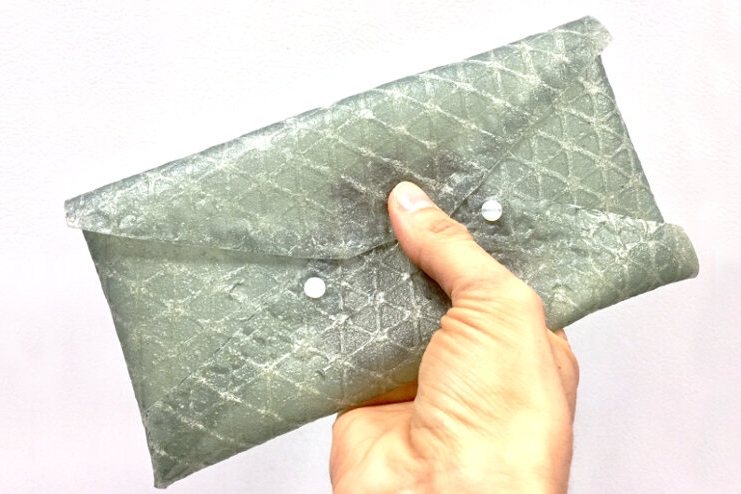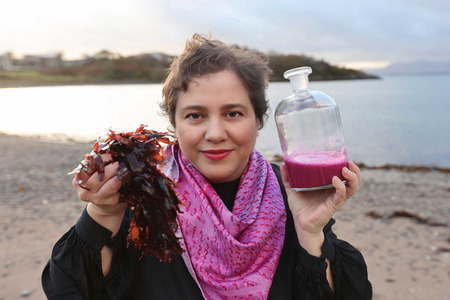
Researchers convert silk proteins into leather-like material
YarnsandFibers News Bureau 2021-05-07 10:45:31 – USATufts University School of Engineering researchers set out to develop a leather-like substitute with similar texture, flexibility, and stiffness when focusing on fabrics that are sustainable, non-toxic, and environmentally friendly.
Tufts engineers were able to break down silkworm cocoon fibers into their protein components and repurpose the proteins to shape the leather-like clothing. A thesis conducted in the journal Materials & Design details the method of creating silk-based leather.
The silk-based leather can be printed in a variety of patterns and textures, has similar physical properties to real leather, and can survive the folding, piercing, and stretching that are common in the production of leather products, including the ability to sew together bits of material and connect hardware like rivets, grommets, handles, and clasps.
Fiorenzo Omenetto, Frank C. Doble Professor of Engineering at Tufts School of Engineering, director of the Tufts Silklab where the material was created, said their research focuses on the use of naturally derived materials that reduce the use of toxic chemicals while preserving material consistency, in order to provide alternatives to commercially used goods.
He adds that they’re making strides toward this aim by combining silk, cellulose from cloth and agricultural waste, and chitosan from shellfish waste, as well as all of the comparatively gentle chemistries used to combine them.
Tufts' silk-based leather has several distinct benefits over any of the other methods. Aside from being made from silk fibers that have been dissolved, the process is water-based, uses only mild chemicals, is carried out at room temperature, and produces mainly non-toxic waste.
Computerized 3D layering can be used to produce standard micropatterns that can tune the material's strength and stability, print micropatterns for beauty (e.g. a basketweave), and non-regular geometrical patterning to imitate the surface structure of real leather. The resulting material is strong, soft, pliable, and durable, and is biodegradable once they reach the waste stream, much like natural leather.
In reality, the silk-leather goods could be dissolved and regenerated into a gel-like stock matter, which could then be re-printed into new items.
Silk fibers, which are widely used in the garment industry, are used to begin the process of producing silk leather. Silk fibroin protein polymers make up these fibers, which can be broken down into different protein components in a water-based slurry. To add flexibility and strength to the material, a base layer of chitosan containing non-toxic plasticizer glycerol and dye is extruded through a tiny bore nozzle onto a rock. Chitosan is obtained from natural sources such as crab, lobster, and shrimp shells. On top of the base layer, a layer of silk fibroin with a plasticizer and a thickener (from vegetable gum) is printed.
Extruding the fibroin slurry through the printer nozzle produces shear forces, which can help to organize the proteins in a way that reinforces the material, rendering it ductile rather than fragile, and mimics normal extrusion like a worm or spider's silk gland. Changing the silk layer's printed pattern may offer a variety of appearances, tunable capabilities, and other physical qualities.
As compared to other processes such as injection molding or subtractive manufacturing, the printing process, also known as "additive manufacturing," is known to be very restrictive in the use of materials and waste generated (like carving or shaving from a block).
Tufts' Silklab has created a variety of other silk-based items, ranging from implantable medical devices to architectural materials that can feel and react to their surroundings by changing color.
Market Intelligence
Ask for free sample Report

experience
Customer Base
dedicated team
Countries Served Worldwide









